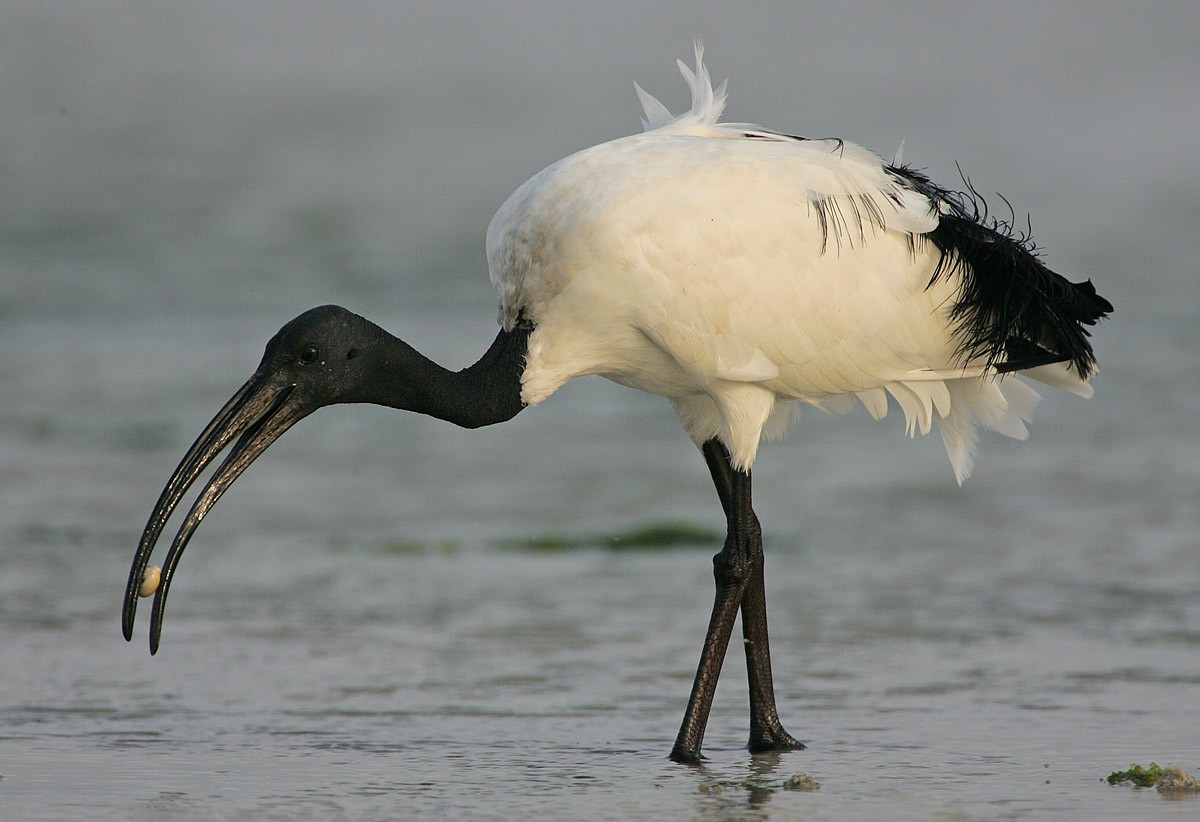African Sacred Ibis
A species of Sacred Ibises and Allies Scientific name : Threskiornis aethiopicus Genus : Sacred Ibises and Allies
African Sacred Ibis, A species of Sacred Ibises and Allies
Botanical name: Threskiornis aethiopicus
Genus: Sacred Ibises and Allies
Content
Description General Info
 Photo By Steve Garvie , used under CC-BY-SA-2.0 /Cropped and compressed from original
Photo By Steve Garvie , used under CC-BY-SA-2.0 /Cropped and compressed from original Description
An adult individual is 68 cm (27 in) long with all-white body plumage apart from dark plumes on the rump. Wingspan is 112 to 124 cm (44 to 49 in) and body weight 1.35 to 1.5 kg (3.0 to 3.3 lb). Males are generally slightly larger than females. The bald head and neck, thick curved bill and legs are black. The white wings show a black rear border in flight. The eyes are brown with a dark red orbital ring. Sexes are similar, but juveniles have dirty white plumage, a smaller bill and some feathering on the neck, greenish-brown scapulars and more black on the primary coverts. This bird is usually silent, but occasionally makes puppy-like yelping noises, unlike its vocal relative, the hadada ibis. 
Size
89 cm
Colors
Brown
Black
Yellow
White
Life Expectancy
21 years
Nest Placement
Ground
Feeding Habits
African Sacred Ibis primarily forages by day, in groups, consuming insects, worms, crustaceans, molluscs, fish, frogs, reptiles, small mammals, carrion, and occasionally seeds. They exhibit specialized feeding behaviors such as probing soil with their long beak and exploiting various nesting sites for eggs and larvae. Their diet also adjusts to available resources, exemplified by preying on invasive species like Procambarus clarkii crayfish.
Habitat
African Sacred Ibis's habitat primarily encompasses freshwater wetlands and surrounding areas such as grasslands and cultivated fields. They adapt well to both natural and human-altered environments, often found foraging in shallow waters like marshes, mud flats, and wet pastures. Nesting generally occurs in trees close to water bodies, and they inhabit regions up to 1800 meters, occasionally venturing higher.
Dite type
Omnivorous
General Info
Feeding Habits
Bird food type
Species Status
The African sacred ibis is classified as "Least Concern" by the IUCN. The global population is estimated at 200,000–450,000 individuals but appears to be decreasing. It is covered by the Agreement on the Conservation of African-Eurasian Migratory Waterbirds (AEWA). 
Scientific Classification
Phylum
Chordates Class
Birds Order
Pelicans and Relatives Family
Ibises and spoonbills Genus
Sacred Ibises and Allies Species
African Sacred Ibis